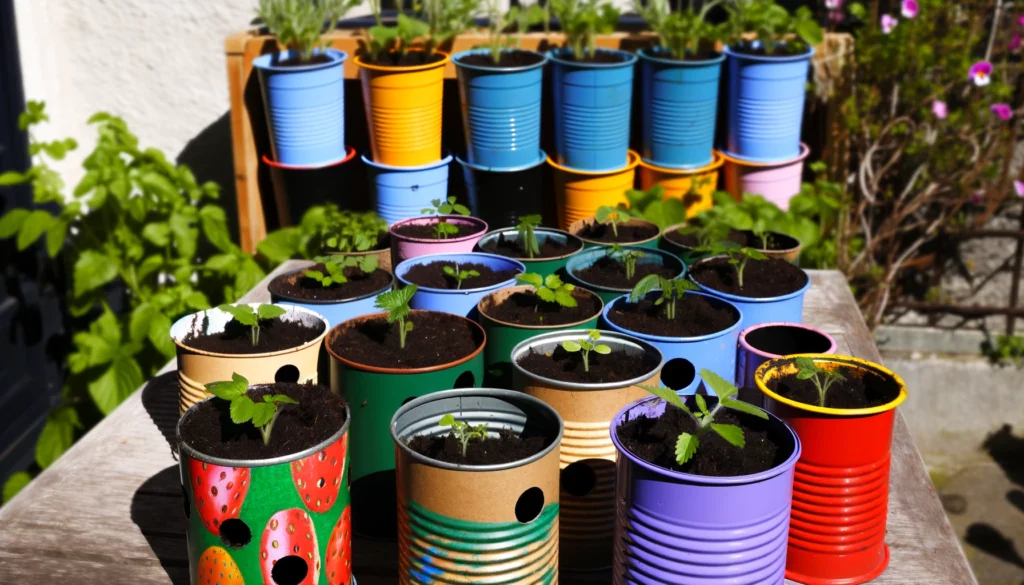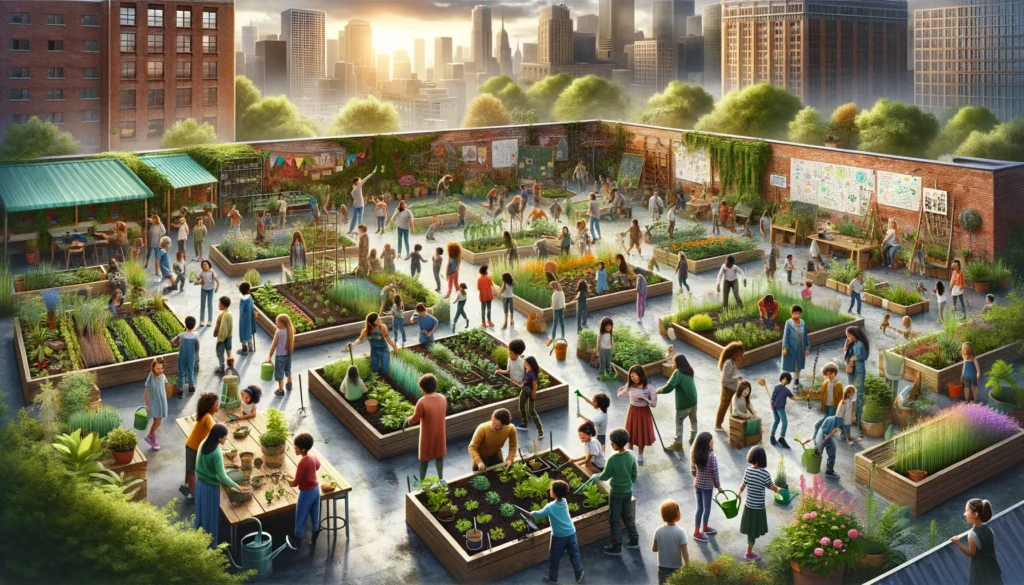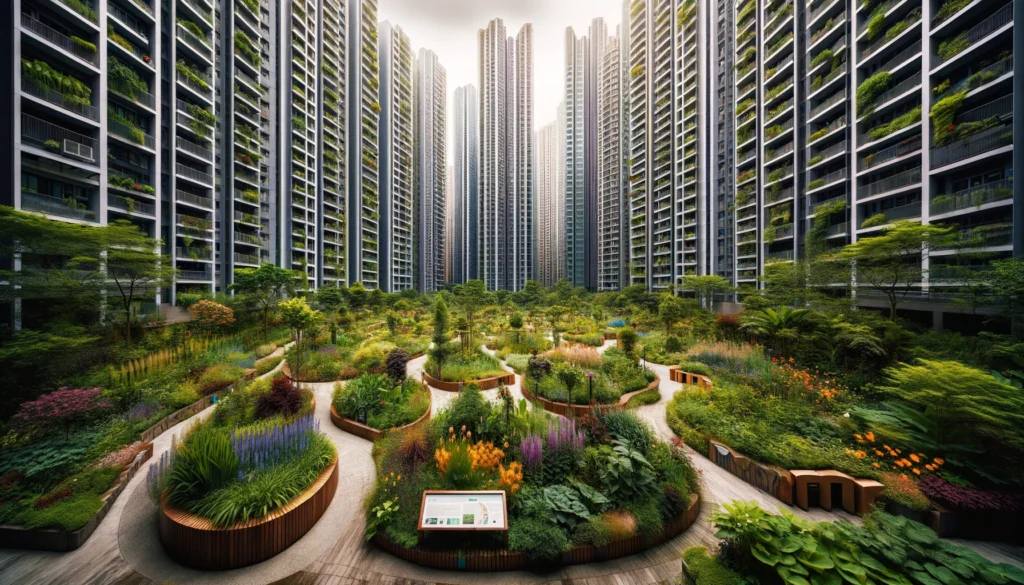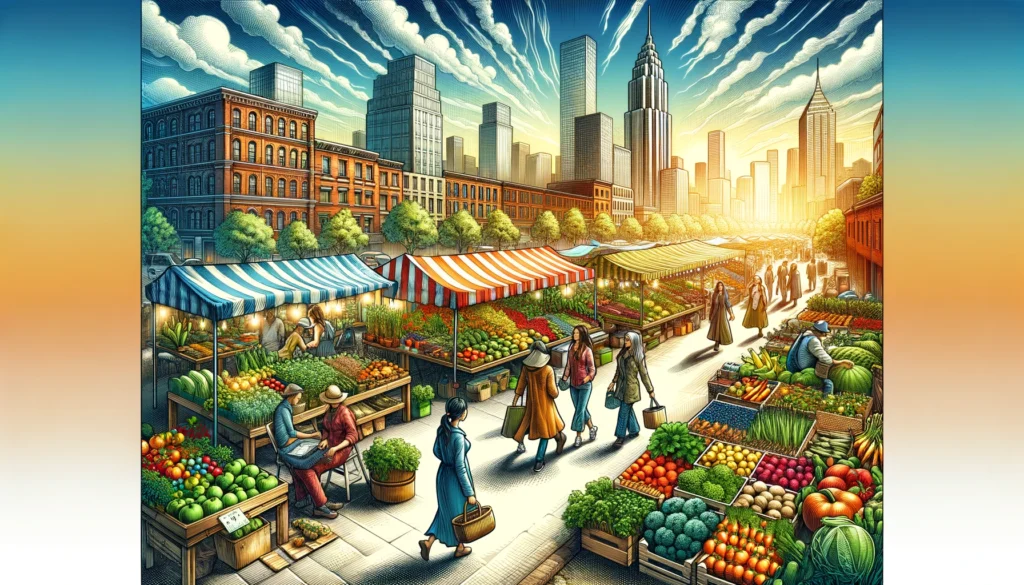As we delve deeper into the essence of urban gardening, it becomes clear that this movement is not just about transforming spaces but lives. Part 2 of our series unveils the myriad benefits that urban gardens bestow upon our environment, society, and personal well-being. Alongside, we provide a beginner’s guide to embarking on your own urban gardening adventure. From the balconies of high-rises to the forgotten corners of community lots, every inch of space holds the promise of green potential. Join us as we explore how to harness this potential, making the leap from concrete to green, one garden at a time.
Getting Started with Urban Gardening
Embarking on an urban gardening journey can seem daunting amidst the concrete and steel of the city. Yet, with some ingenuity and planning, urban dwellers can transform even the smallest spaces into lush, productive gardens. Here’s how to begin cultivating your urban oasis.
Choosing the Right Location
- Light and Exposure: The first step is to assess the amount of sunlight available. Most vegetables and fruits require at least 6 hours of direct sunlight daily. South-facing spaces are ideal in the northern hemisphere for maximizing sunlight exposure.
- Space Utilization: Consider the space you have available—be it a balcony, rooftop, windowsill, or community garden plot. Each offers unique opportunities and challenges for urban gardening.


Selecting Suitable Plants
- Consider Local Climate: Choose plants that will thrive in your urban environment’s specific conditions. Local gardening groups or extension services can offer valuable advice on plant selection.
- Space-Savvy Varieties: Opt for dwarf or compact varieties of fruits and vegetables if space is limited. Many herbs, leafy greens and root vegetables do well in small spaces and containers.
Containers and Soil
- Choosing Containers: Ensure containers have adequate drainage to prevent waterlogging. Recycled containers can be a cost-effective and environmentally friendly option.
- Soil Selection: Use a high-quality potting mix designed for container gardening. It’s lighter and provides better drainage and aeration than garden soil.
Watering and Maintenance
- Efficient Watering: Over-watering can be as detrimental as under-watering. Consider self-watering containers or a drip irrigation system for consistent moisture. Collecting rainwater can be an eco-friendly watering option.
- Regular Care: Check plants regularly for pests and diseases. Companion planting can help deter pests naturally, and organic pesticides can be used if necessary.
Starting an urban garden is a rewarding endeavor that brings a piece of nature into the urban landscape. It requires consideration of space, light, and plant selection but offers immense satisfaction through the cultivation of fresh produce and the creation of green spaces. By starting small and experimenting with different plants and gardening techniques, urban gardeners can gradually expand their green footprint, contributing to a healthier and more sustainable urban environment.

Urban gardening is a journey of discovery, experimentation, and growth. It’s about reconnecting with nature, enhancing our living spaces, and contributing to the ecological and social fabric of our communities. Whether you’re growing a few herbs on a windowsill or transforming a rooftop into a vegetable garden, every plant contributes to a greener, more vibrant urban future.
Benefits of Urban Gardening
Urban gardening is a beacon of hope in the concrete landscape, bringing a multitude of benefits that touch upon environmental, social, and economic spheres. This greening movement isn’t just about cultivating plants; it’s about cultivating healthier, more vibrant, and sustainable urban communities.
Environmental Impact
- Biodiversity and Ecosystem Services: Urban gardens create habitats for various species, enhancing urban biodiversity. They serve as crucial pollinator havens in cities, where such ecosystems are often scarce.
- Mitigation of Urban Heat Island Effect: The vegetation in urban gardens helps cool cities, reducing the urban heat island effect. This not only makes cities more comfortable during hot weather but also reduces the energy consumption needed for cooling buildings.
- Improved Air and Water Quality: Plants in urban gardens filter pollutants from the air and reduce stormwater runoff, enhancing the quality of urban environments. They act as natural air filters, absorbing carbon dioxide and releasing oxygen.

Social Benefits
- Community Engagement and Social Cohesion: Urban gardens are communal spaces that foster social interactions and community engagement. They bring people together, promoting a sense of belonging and collective responsibility for local environments.
- Mental Health and Well-being: Gardening activities are known to reduce stress, anxiety, and depression, offering a therapeutic escape from the hustle and bustle of city life. The green spaces provide a tranquil environment for relaxation and contemplation.
- Education and Skill Development: Urban gardens serve as outdoor classrooms, where people of all ages can learn about sustainability, botany, nutrition, and environmental stewardship. They empower urban dwellers with the knowledge and skills to grow their own food and make sustainable choices.
- Harvesting Health: Pesticide-Free Urban Farming: Urban farming offers a gateway to reconnecting with the food we eat, ensuring it’s as fresh and healthy as possible. By adopting natural farming practices, urban gardeners can control what goes into their soil and onto their plants, bypassing the conventional agricultural model laden with chemical inputs. It is a testament to the power of urban agriculture to change the way we think about food, from how it’s grown to how it nourishes our bodies and communities.
Economic Advantages
- Reduction in Food Costs: By growing their own fruits, vegetables, and herbs, urban gardeners can save money on groceries. Urban gardens also contribute to local food security, providing fresh produce in areas with limited access to affordable, healthy food options.
- Job Creation and Local Economy Support: Larger urban gardening projects can create jobs and support local economies. They offer opportunities for small-scale farming, gardening services, and the sale of locally grown produce.

Urban gardening stands at the intersection of environmental sustainability, social well-being, and economic resilience. It’s a testament to the power of community and green spaces to transform urban areas into healthier, more sustainable, and more liveable environments. By nurturing these green spaces, we nurture our communities, paving the way for a more sustainable and connected urban future.
These benefits highlight the multifaceted value of urban gardening, underscoring its significance in addressing contemporary urban challenges. As we move forward, it’s essential to recognize and support the role of urban gardening in building resilient and vibrant cities.
Conclusion
The journey into urban gardening reveals a path to not only greener cities but healthier, more connected communities. The benefits extend beyond the immediate joy of harvesting your own produce; they ripple outwards, improving environmental health, fostering social bonds, and enhancing mental well-being. As you stand on the brink of starting your own urban garden, remember that each small step contributes to a larger, collective movement toward sustainability. In Part 3, we will navigate through the challenges that urban gardeners face, armed with innovative solutions and inspiring success stories. The green revolution in our cities is just beginning, and you are a vital part of it.
Author’s Note
Embarking on this green journey through urban gardening has been an enlightening experience, one that I am eager to share with each of you. This second part of our series aims to equip you with the knowledge and inspiration needed to start your own urban garden, no matter the size of your space. It’s a call to action, urging you to look beyond the grey and envision a greener, more vibrant urban life.
Whether you’re a seasoned green thumb or a curious newcomer, the world of urban gardening is ripe with possibilities. I hope this guide serves as a stepping stone on your path to creating your own urban oasis. Let’s grow together, fostering a greener tomorrow, one garden at a time.
G.C., Ecosociosphere contributor.
References
- EcoWatch. “Urban Gardening 101: Everything You Need to Know.” Accessed February 9, 2024. EcoWatch.
- The Happy Chicken Coop. “Urban Gardening For Beginners: The Ultimate Guide.” Accessed February 9, 2024. The Happy Chicken Coop.
- Iberdrola. “What is an Urban Garden and how to make one.” Accessed February 9, 2024. Iberdrola.
- Conserve Energy Future. “What is Urban Gardening? Importance and Amazing Ideas For Sustainable Urban Gardening.” Accessed February 9, 2024. Conserve Energy Future.





Comments
Can you be more specific about the content of your article? After reading it, I still have some doubts. Hope you can help me. https://www.binance.com/tr/register?ref=W0BCQMF1
Your article helped me a lot, is there any more related content? Thanks!
Your article helped me a lot, is there any more related content? Thanks!